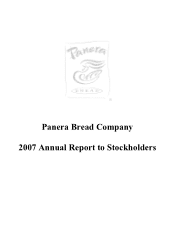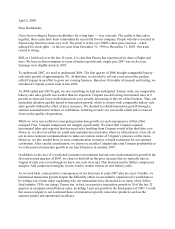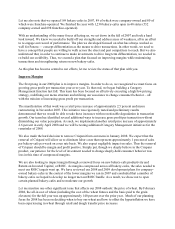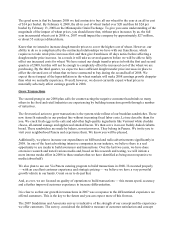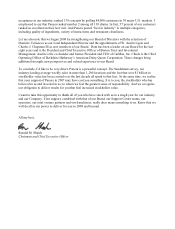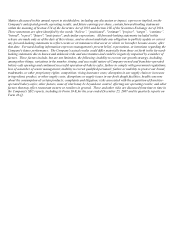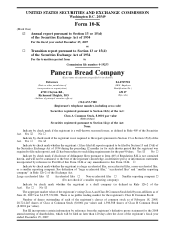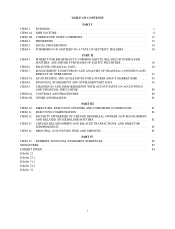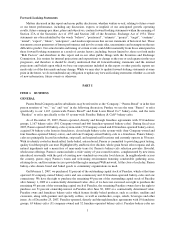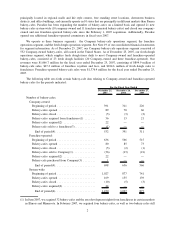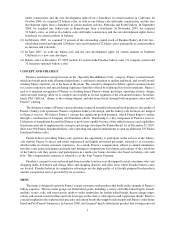Panera Bread 2007 Annual Report Download - page 3
Download and view the complete annual report
Please find page 3 of the 2007 Panera Bread annual report below. You can navigate through the pages in the report by either clicking on the pages listed below, or by using the keyword search tool below to find specific information within the annual report.April 2, 2008
Dear Stockholder,
I have been writing to Panera stockholders for a long time — over a decade. The reality is that, taken
together, these years have been extraordinarily successful for our company. People who have invested in
Panera long term have done very well. The proof is in the over 1000% share price increase – when
adjusted for stock splits – in the ten years from December 31, 1996 to December 31, 2007. Our track
record is strong.
Still, as I look back over the last 10 years, it is clear that Panera has experienced its share of highs and
lows. We have not been immune to years of modest growth and, simply put, 2007 was such a year.
Earnings were slightly down in 2007.
To understand 2007, we need to understand 2006. The first quarter of 2006 brought comparable bakery-
cafe sales growth of approximately 9%. At that time, we decided to roll out a new pizza-like product
called Crispani in an effort to grow our evening business. Based on 18 months of research and testing, we
introduced Crispani system wide in late 2006.
As 2006 ended and 2007 began, we saw something we had not anticipated. System wide, our comparable
bakery-cafe sales growth was weaker than we expected. Crispani was delivering incremental sales of 2
percent as expected, but overall transactions were actually decreasing in the rest of the business. Thus, our
immediate attention quickly turned to transaction growth, which is system-wide comparable bakery-cafe
sales growth without the effect of price increases. We decided to rebuild transaction growth through a
summer seasonal menu rotation, or celebration, featuring several very successful salads and a renewed
focus on the quality of operations.
While we were successful in re-energizing transaction growth, several consequences of that effort
emerged. First, Crispani compressed our margins significantly. We knew that Crispani required
incremental labor and expected that increased sales resulting from Crispani would offset that labor cost.
However, we discovered that we could only maintain increased sales when we utilized most, if not all, of
our in-store customer communications to make our visitors aware of Crispani’s presence on the menu.
However, we also needed those in-store communication resources to build excitement for our summer
celebration. After careful consideration, we choose to sacrifice Crispani sales and Crispani profitability as
we refocused on transaction growth in our lunch business in summer 2007.
In addition, in the face of a weakened consumer environment and our own weak transaction growth in the
first and second quarters of 2007, we chose to hold off on the price increase that we typically take in
August of each year (even though we knew our costs were up). This decision lead to further compressed
margins. And compressed margins, in turn, lead to weaker returns on new bakery-cafes.
As we look back, some positive consequences of our decisions in early 2007 also are clear. Notably, we
maintained transaction growth despite the difficultly others in our industry experienced (I would hate to
be writing you a letter today explaining why our transactions have decreased as so many of my fellow
food industry CEOs are doing). Panera has, in fact, seen positive transaction growth in 10 of the last 12
quarters in company-owned bakery-cafes, including 3 percent growth in the third quarter of 2007. I credit
this success largely to our continued focus on transaction growth, innovative products (such as the
summer salads) and operational excellence.

